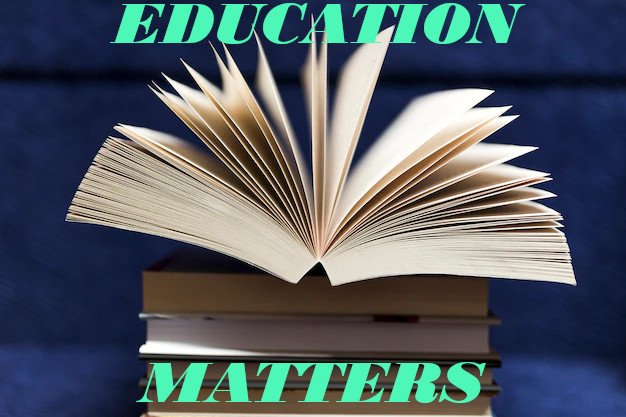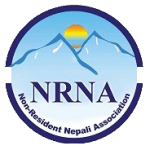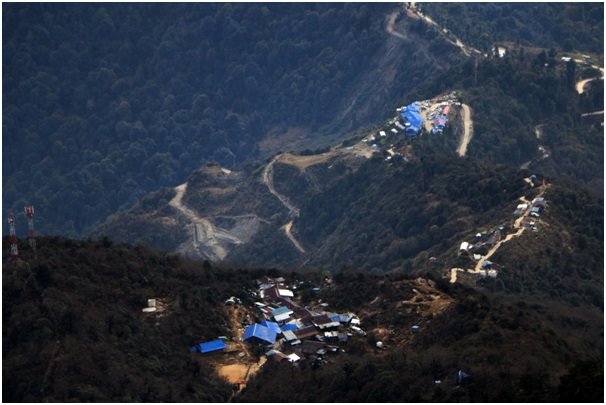Education Matters: Empowering Teachers

Building on our previous examination of private school success myths, this article shifts focus to the heart of any education system: its teachers. We delve into the often-overlooked challenges faced by educators in Nepal, unstitching deep-rooted stigmas surrounding teacher education and investigating perceptions that influence career choices. Join me in this crucial conversation about improving teaching quality and transforming Nepal’s education, where empowered and prepared teachers lead the way.
The Importance of Teacher in Students’ Success
Leading education professor at Stanford, Linda Darling-Hammond, and many international entities, universally agree—teachers are crucial for student success. Darling-Hammond’s research underscores that teacher quality significantly outstrips factors like class size or spending levels in impacting student outcomes. This is echoed by the Measures of Effective Teaching (MET) Project, a landmark $575 million initiative funded by the Bill and Melinda Gates Foundation, which spanned six United States school districts and found that effective teachers significantly enhance student achievement. In my exhaustive research, a compelling finding has emerged: the influence of a teacher as the second largest influencer on success, just after students themselves who contribute nearly 50% of their own success. In comparison, school factors contribute about 6 to 7%, and larger entities contribute to a lesser 2 to 3%. This observation has been corroborated by various empirical studies, such as Hattie’s influential work in 2003, the comprehensive review by the Progress of Education Reform in 2012, and Terada’s 2019 exploration of a teacher’s long-term impact, all underscoring the crucial role teachers play in shaping students’ academic success. Globally, the Organization for Economic Cooperation and Development (OECD) echoes this sentiment, emphasizing that teaching quality is a key factor to shape student success. These findings underscore the invaluable role of teachers, compelling us to examine how Nepal is addressing this critical component in its education system.
The Making of a Teacher
At the heart of education, we find teachers: figures of respect and repositories of knowledge across various fields. Their role remains constant across cultural nuances and historical shifts—a beacon of wisdom guiding learners on their educational journey. This understanding hearkens back to ancient times when a ‘teacher’, or ‘guru’ in Sanskrit, was seen as a luminous guide leading others from ignorance (‘gu’) to enlightenment (‘ru’). This enduring perception underpins the profound impact of teachers, echoing through today’s educational discourse and international policies.
The OECD underscores that effective teaching requires a harmonious interplay of deep subject knowledge and pedagogical prowess. Emphasizing this point, the United Nations Educational, Scientific, and Cultural Organization (UNESCO) articulated in its 1998 report, “Teachers and Teaching in a Changing World”, that teachers are not merely transmitters of knowledge, but facilitators of learning, undertaking diverse roles—from counselors to managers—integral to students’ development.
Therefore, a nuanced understanding of this profession is indispensable to cultivating teachers capable of carrying out a plethora of roles and guiding students toward enlightenment.
The Perception of Teaching in Nepal
As discussed in the previous issue of this series, teaching in Nepal is often seen not as a vocation, but rather as a means of earning supplementary income or as an avenue to enhance one’s academic journey, especially among youths. The societal perception towards this profession tends to be negative, largely due to its meager pay, particularly amongst private school teachers who typically earn less than their public-school counterparts. Compelling personal—stories including mine as a former private school teacher, and as a son of a retired public school teacher—reveal the financial struggle teachers and their families experience, with many enduring a life of poverty despite stable employment. This harsh reality deters future generations from pursuing this profession, relegating teaching to a less desirable career choice.
This perception is not unique to Nepal; similar conditions persist in the Western world where teachers, despite the profession being largely middle-class, often find themselves compelled to seek additional employment during unpaid summer breaks to fulfill their financial needs. Nevertheless, the nobility associated with teaching often leads to the profession’s financial challenges being overshadowed. In Nepal, unless teachers specialize in high-demand subjects like science, math, or English at the middle or high school levels, they struggle to earn extra income to meet the growing needs of their families in the 21st century. Despite the dismal salaries for entry-level teachers—ranging from $249 to $330 per month (Job Market Profile)—it’s staggering to note that an overwhelming 89.03% of the total educational expenditure in 2015 was allocated for salaries and compensation (World Bank). This rate far exceeds those of the United States (80%) and the average OECD countries (74%) (National Center for Education Statistics, United States).
Rural and suburban areas often resort to hiring local teachers with limited education, disregarding the necessity for formal teaching credentials due to financial constraints. This approach, while offering local employment, results in teachers being grossly underpaid and devoid of professional competency. Parents, often unable to understand English textbooks or discern teaching quality, are appeased by seemingly perfect test scores and their children echoing English phrases. This creates an environment where teacher accountability diminishes and the quality of teaching and learning activities suffers significantly, thereby deepening the educational crisis.
Good Student, Good Teacher?
The selection and training of teachers in Nepal often operate under the premise that exceptional academic performance as students automatically translate into effective teaching skills if they choose to pursue teaching. Such an assumption overlooks the multifaceted skill set required for teaching, which encompasses not only content mastery but also effective communication, an understanding of student psychology, and the ability to design engaging, and differentiated lesson plans.
Understanding the making of a teacher in the unique context of Nepal’s education system requires an appreciation of the societal perspective and prevalent cultural biases. In the educational landscape, leaning heavily toward content knowledge, teachers often bring robust subject knowledge to the classroom, the nuanced craft of teaching, from tailoring lessons to diverse learning needs to fostering conducive learning environments, may not receive its due attention.
Teaching as a Plan B
Common to many Asian countries, the trajectories of children’s careers are often predestined by their parents. The popular choices usually include doctors, engineers, and bankers, among others, while teaching is not often encouraged. However, as children grow and face the harsh realities of their chosen professions, the journey becomes much more challenging than initially envisaged. The allure of a lucrative salary in banking, or the potential income from bribery in government jobs, seems tempting. However, these career paths often prove elusive. While banks frequently favor candidates with strong political ties or exceptional merit, government positions present another set of hurdles. These jobs either cater to those with substantial political influence, or they necessitate rigorous preparation for and successful performance in the demanding Lok Sews Aayog selection procedures.
This reality reinforces a concerning trend within the Nepalese education sector: the relegation of the teaching profession to a fallback career. Upon graduating high school, many high-achieving Nepalese students aim for careers in sectors such as Science, Math, Engineering, Medicine, Finance, or the Arts. Teaching, typically a less-preferred choice, often becomes an option for those unable to secure their desired vocations or for students who don’t excel academically. This unfortunate reality often sees the teaching profession—traditionally held in high esteem—demoted to a plan B rather than a first-choice career.
To this end, modern-day research shows that an overrepresentation of ineffective, out-of-field, or inexperienced teachers not only falls short of enhancing an already strained education system, such as Nepal’s but may exacerbate it. This scenario deprives students of the enriching learning experiences that dedicated and skilled teachers could provide. Consequently, the teaching workforce often comprises individuals whose initial career goals were unattained—potentially lacking the essential passion and dedication in the profession.
These arguments illuminate an urgent need for a paradigm shift in the perception of teaching—it should be recognized not as a last resort, but as a pivotal vocation requiring passion, dedication, and deep understanding of pedagogical skills. Such a shift is vital not only for transforming the perception of teaching but for ensuring quality education for future generations.
Additional Challenge: Navigating the Imminent AI Revolution
Our discourse on the present and future of Nepalese teachers would be incomplete without addressing the upcoming challenges spurred by the rise of Artificial Intelligence (AI). Judging from the current state, one can argue that our education system lags behind Western societies by roughly 25 to 30 years. At a time when we are grappling with building a strong culture of teacher preparation, many developed nations are already exploring ways to enhance education via modern technology, including Artificial Generative Intelligence (AGI) and even more advanced Artificial General Intelligence.
Prominent historian and author Yuval Noah Harari, corroborated by OpenAI’s CEO Sam Altman and many other scientists working in the field of AI, warn that we are on the brink of a generational shift – changes that spanned centuries in the past are now expected to unfold within a single decade. This rapid evolution will undoubtedly be tumultuous and fraught with uncertainties.
If we don’t promptly educate our teachers – who are spread across the country – about these imminent changes, they won’t be prepared to adapt their teaching methods or guide their local communities through the impending transformation. As we’re about to witness what could be the most significant shift in our lifetime, our already lagging education system risks being pushed further into an abyss. Therefore, equipping our teachers with knowledge about AI’s potential impact on education is of utmost importance to ensure a smoother transition into this brave new world standing on the other side of the imminent change.
A Call to Action
The advent of the AI revolution, coupled with the current predicament of teaching in Nepal, necessitates prompt, unified action from all stakeholders – governments, educational institutions, parents, and society at large. Our goal should be to elevate teaching from a fallback career to a sought-after vocation and to prepare for the integration of AI in education. We need increased government investment in teacher education and training programs, strict entry standards for the profession, competitive compensation packages, and continuous opportunities for professional development. The latter should focus on understanding pedagogical underpinnings, student psychology, effective classroom communication, and mastering the use of AI tools in education.
As AI technologies, such as virtual tutors, personalized learning, automated grading, and predictive analytics, become increasingly commonplace, the impact on Nepal’s education system is inevitable. If our educational system fails to integrate these advancements, we risk amplifying the current exodus of students—already at an alarming rate of over 121,000 in 2022—further depriving our educational landscape of promising minds. Conversely, viewing AI as an enhancement rather than a replacement for the unique human qualities that teachers bring to the classroom—such as empathy, mentorship, and immediate adaptation to students’ needs—offers a competitive edge. Educational institutions must drive a societal shift in the perception of teaching by promoting excellence in the field and equipping educators for an AI-integrated future through expanding digital literacy and AI training.
Raising the Bar for Teachers
Transforming the perception of teaching involves setting higher standards for educators, recognizing it as a profession demanding not only academic knowledge, but also emotional intelligence, creativity, and unwavering dedication to student success. Elevating the status of teaching implies considering teachers as experts, and leaders in their subject areas. This reimagined landscape would foster a culture of ongoing learning and development, keeping educators abreast of evolving pedagogical techniques and education research.
The imminent AI revolution presents an opportunity to raise the bar for teachers in Nepal. By integrating AI understanding into teacher education and fostering their digital literacy skills, we can empower teachers to leverage AI to enhance their teaching effectiveness. This will, in turn, improve the quality of education in Nepal. Recognizing the complexity of teaching in an AI-integrated world, we can elevate the societal status of the teaching profession, attracting the most talented and passionate individuals to this pivotal vocation.
As this shift takes place, teachers, now respected as professionals, would be motivated to go beyond their call of duty. They would create engaging and innovative learning experiences by leveraging their understanding of AI alongside traditional methods. This transformation is not just about changing perceptions—it’s about elevating the profession to ensure the best possible education for all. As we integrate AI into education and continue to commit to professional growth, we recognize teachers as key drivers of student success, paving the way for a thriving education system in Nepal.
Thank you for staying with me through this extensive exploration. Your readership and interest in ‘Education Matters’ are greatly appreciated. In the next installment of the series, we will delve into ‘Redefining Success in Education’. Together, we’ll question conventional norms, scrutinize the impact of publicizing student test scores, and explore the importance of prioritizing personal growth over comparative achievements. I invite you to join me as we seek to understand the potential harm to student self-esteem from our current practices and advocate for meaningful changes to redefine success in Nepal’s education system.






Leave Comment